Tecmate Optimate 4 Instructions For Use Manual
- Type
- Instructions For Use Manual
Page is loading ...

2
T
E
S
T
0.8
0.5
0.2
AMPS
77
10
9
8
3.1
3.2
4.1
4.2
66
55
2
1
3.3
QUICK GUIDE – LED INFORMATION PANEL
Full details on any LED can be found in the manual under the same #
1. LED #1 - Power on. This LED confirms AC power supply to the charger.
All charge and test LEDs light briefly to confirm microprocessor health.
2. LED #2 indicates inverse polarity - wrong output connections. Swap around to activate output.
3. Circuit activation and recovery of deep-discharged, neglected batteries
3.1 ACTIVATION - If the battery voltage is above 2V, LED #3 lights briefly to confirm circuit activation.
For most batteries LED #3 goes out immediately and charge LED #4 comes on.
3.2 RECOVERY - For neglected or very flat batteries, LED #3 remains on and indicates steadily.
3.3 TURBO RECOVERY - For a badly neglected battery TURBO RECOVERY engages and LED #3 flashes.
If step 3 has not concluded after 2 hours, step 4 engages automatically.
4. Charge and charge verification
4.1 CHARGE: A steady LED #4 indicates the bulk charge stage.
4.2 VERIFICATION: LED #4 flashes while the circuit verifies battery charge level.
If the battery requires further charging the program reverts to CHARGE. Multiple reversions may occur.
These reversions will cause LED #4 to alternate between steady and flashing, irregularly.
When LED #4 has flashed continuously for 30 minutes (or if steps 3 + 4 have not concluded within 48 hours) step 5
engages and a voltage retention test starts.
5. 6. 7. Voltage retention tests alternating half-hourly with battery maintenance
5 For a good battery LED #5 flashes throughout the 30 minute test. NO CHARGE CURRENT.
6/7 Flashing #6 / #7 may replace #5 if the battery voltage falls during the test, or vice versa.
Read
POINTS 6 and 7 in the main manual if either or both LEDs #6 and #7 indicate in this period.
Maintenance - float charge at a safe voltage limit to counter self-discharge.
During the 30 minute maintenance charge periods, whichever LEDs #5 / 6 / 7 was/were flashing at the end
of the TEST now indicate steadily. The battery can draw current as required to support small loads and counter
self-discharge.
Maintenance and voltage retention test periods continue alternating every 30 minutes until the battery is
disconnected. The test result is updated during each subsequent test.
8. 9. 10. CHARGE CURRENT LEDs
8 LED #8 (0.2A) could indicate if LED #3 (DESULFATE) is on or if LED #4 (CHARGE) is flashing.
9 LED #9 (0.5A) is normally on during the early part of the charge verification with LED #4 flashing.
10 LED #10 (0.8A) should indicate together with a steady LED #4 (CHARGE) during bulk charge.
If any LEDs #8/9/10 are on and any LEDs #5/6/7 are also on, read “note” in manual after
POINT 10.
On battery disconnection, all CHARGE and TEST LEDs light briefly to confirm microprocessor reset.
CURRENT
ACTIVATE
DESULFATE
TEST MAINTAIN
CHARGE
VERIFY

3
™
AUTOMATIC CHARGER FOR 12V LEAD/ACID BATTERIES.
Recommended for batteries of from 2 to 50Ah capacity. Do not use for NiCd, NiMH, Li-Ion or
non-rechargeable batteries. Input: 110 – 120V~ 0.085A. Output: 0.8A 12W (max).
IMPORTANT: READ THE FOLLOWING FULL INSTRUCTIONS FOR USE BEFORE USING THE CHARGER.
SAFETY WARNING AND NOTES:
Batteries emit EXPLOSIVE GASES - prevent flame or sparks near batteries.
Disconnect AC power supply before making or breaking DC/battery connections. Battery acid is highly corrosive.
Wear protective clothing and eyewear and avoid contact. In case of accidental contact, wash immediately with soap
and water. Check that the battery posts are not loose; if so, have the battery professionally assessed. If the battery
posts are corroded, clean with a copper wire brush; if greasy or dirty clean with a rag damped in detergent. Use
the charger only if the input and output leads and connectors are in good, undamaged condition. If the input cable
is damaged, it is essential to have it replaced without delay by the manufacturer, his authorised service agent or
a qualified workshop, to avoid danger. Protect your charger from acid and acid fumes and from damp and humid
conditions both during use and in storage. Damage resulting from corrosion, oxidation or internal electrical short-
circuiting is not covered by warranty. Distance the charger from the battery during charging to avoid contamination
by or exposure to acid or acidic vapours. If using it in the horizontal orientation, place the charger on a hard, flat
surface, but NOT on plastic, textile or leather. Otherwise use the fixing holes provided in the enclosure base to
attach the charger to any convenient, sound vertical surface.
EXPOSURE TO LIQUIDS: When placed on a horizontal flat surface this charger is designed to withstand exposure
to liquids accidentally spilled or splashed onto the casing from above, or to light rainfall. Do not allow liquid to
accumulate below or around the base of the charger. Prolonged exposure to falling rain is inadvisable and longer
service life will be obtained by minimizing such exposure. Failure of the charger due to oxidation resulting from the
eventual penetration of liquid into the electronic components is not covered by warranty. Never expose connectors
or plugs to rain or snow.
BATTERY CONNECTIONS: 2 sets of interchangeable connection sets are supplied to connect the battery to the
charger. One has crocodile clamps for charging the battery off-vehicle, the other has metal eyelets intended for
permanent connection to the battery posts, and a resealable rubber protective cap on the SAE connector at its other
extremity. When fixed permanently to the vehicle’s battery, this connection set allows easy and sure connection
of the charger to maintain the battery on-vehicle. The resealable rubber cap should be closed whenever the
charger is disconnected and/or the vehicle is in use to protect the SAE connector from dirt and moisture. Consult a
professional service agent for assistance in attaching the metal eyelets to the battery posts. Position the polarized
SAE connector (for connection to the charger) as far as possible from the battery and secure it so that it cannot
entangle any moving part of the vehicle or be pinched or damaged by sharp edges. The in-line fuse in the eyelets
connection set protects the battery against accidental shorting across positive and negative conductors. Replace
any burnt fuse only with a similar new fuse of identical type and 7.5A rating.
IMPORTANT NOTES:
1. When charging a car battery, or if using the battery clamps, first disconnect and remove the battery from the
vehicle and place it in a well ventilated area.
2. If the battery is deeply discharged (and possibly sulfated), it is essential to disconnect the battery from the
vehicle before connecting the charger for a recovery attempt. The charger’s special recovery mode cannot
engage if it senses that the battery is still connected to a vehicle wiring circuit which effectively offers
a lower electrical resistance than the battery on its own. However, if the deep-discharged battery is not
removed for recovery, neither battery nor vehicle electronics will be damaged.
3. If nonetheless you intend to connect the charger to an automotive battery using the battery clips connection
set without first disconnecting and removing the battery, connect first to the battery terminal not connected
to the chassis, then the other battery clip to the chassis well away from the battery and fuel line. Do this
before connecting to the AC input. Always disconnect in reverse sequence.

4
USING THE OPTIMATE
™
4
The points below are numbered the same as the quick guide on the inside front cover.
1. and 2. Connections and input power
Connect the charger to the battery: RED clamp to POSITIVE (POS, P, +) terminal and BLACK clamp to NEGATIVE
(NEG, N,–) terminal. Now you are ready to start:
1. Connect the charger to a 110 – 120V AC receptacle. The “POWER ON” LED #1 should illuminate. If not,
check your AC supply and the connection to it.
2. If the INVERSE POLARITY LED #2 indicates, the battery connections are incorrect. The charger is
electronically protected so no damage will result, and the output will be disabled automatically. Disconnect
the AC input, swap the battery connections around, then restore the AC input power.
Automatic microprocessor controlled operations.
All charge and test leds light briefly after POINT 1 above to confirm microprocessor health.
3. Circuit activation and recovery of deep-discharged, neglected batteries
For safety reasons, the OptiMate™ output will only switch on if a battery retaining at least 2V is correctly
connected to it and to a live 110 – 120V input. If these conditions are not met, only the POWER ON LED #1 will light
on the LED panel.
3.1 Immediately the output circuit is activated, the orange DESULFATE LED #3 comes on very briefly while the
OptiMate™ checks whether the battery can be charged effectively by the normal multi-stage program. If it
can, the yellow CHARGE LED #4 will almost immediately replace the DESULFATE LED, and the
CURRENT LED
#10 (0,8A) should come on.
3.2 If the battery is extremely flat (deep-discharged or sulfated), the DESULFATE LED will continue to indicate for
up to 2 hours while a special high voltage is applied to force a very small fixed current into the battery in a
recovery attempt. This recovery mode has two stages. In the first stage the voltage is limited to about 16V
for 5 seconds while the circuit assesses whether this level is likely to be adequate to recover the battery.
If this assessment is positive the recovery mode program continues with voltage limited at 16V for up to
2 hours maximum, or until the moment when the automatic circuit judges that the battery can accept the
normal charging program. During 3.2 the charge current LED #8 (0.2A) may indicate after some time when
the battery starts to accept some current.
3.3 In the case of very badly neglected batteries that have not received any charge for many months, the
second more powerful TURBO stage of the recovery mode will engage about 5 seconds after the circuit
has been initialised. The voltage limit is reset at 22V, but the current is limited to a very low and safe value.
To indicate the activation of the TURBO RECOVERY mode the DESULFATE LED #3 flashes. As and when
the battery can accept the very low set current, the charge voltage automatically reduces. To indicate this
progress the DESULFATE LED will stop flashing and indicate steadily (
POINT 3.2) until the circuit judges that
the battery can accept the normal charging program. At this moment or in any case after the maximum time
limit of 2 hours has elapsed, the CHARGE mode (
POINT 4) will engage.
NOTE: A battery left deep-discharged for an extended period may develop permanent damage in one or more
cells. Such batteries may heat up excessively during charging. Stop charging any battery immediately if it is
uncomfortably hot to touch.
4. Charge and charge verification
4.1 The BULK CHARGE stage (steady LED #4) delivers a constant current of about 0.8 Amps (LED #10) into the
battery. This will cause the charging voltage to increase gradually. When it reaches 14.3V, the OptiMate™
will start the absorption and CHARGE VERIFICATION stage.
4.2 CHARGE VERIFICATION (flashing LED #4): The charging voltage is now limited at 13.6V during 30 minutes
whilst the battery’s charge level is verified. If the battery requires further charging the program will revert
to the main CHARGING stage (
POINT 4.1) and yellow LED #4 will indicate steadily again. When the rising
voltage again signals that the battery is approaching full charge the circuit reverts to VERIFICATION and
LED #4 resumes flashing. These reversions may occur as many times as is necessary to reduce the
battery’s current demand below 200mA at 13.6V (which is consistent with a battery that has accepted as
much charge as its basic condition allows). As soon as the circuit has verified that the charge is adequate
(signaled by LED #4 having flashed continuously and consistently for a full 30 minutes), the voltage
retention test (see
POINT 5) automatically follows.

5
NOTE 1. For safety reasons there is an overall time limit of 48 hours for program stages 3.2 through 4.2.
NOTE 2. Some sealed “MF” or “AGM” batteries that have been neglected may cause the program to advance to
the CHARGE VERIFICATION stage (4.2) without proceeding through the bulk CHARGE stage (
POINT 4.1). The built-in
diagnostics will detect and correct this anomaly. The circuit will oscillate between bulk charge and verification as
described in
POINT 4.2.
5., 6. and 7.
Voltage retention tests alternating half-hourly with battery maintenance
The first VOLTAGE RETENTION TEST period of 30 minutes follows POINT 4.2, thereafter a 30 minute MAINTENANCE
period. These 30 minute TEST and MAINTENANCE periods then alternate for as long as the battery remains
connected. Delivery of current to the battery is interrupted for 30 minutes during voltage retention test periods to
allow the battery to rest (thereby minimizing loss of water from the electrolyte) and to allow the circuit to monitor
the battery’s voltage decline to determine its ability to retain charge and deliver power.
5. For batteries with a good state of health the green LED #5 should flash at the start of the test period and
continue to flash for the full 30 minutes until the next 30 minute maintenance period commences, when
the LED indication reverts to steady. If the battery remains in circuit with the vehicle’s electrical system, and
accessories or lights impose an electrical load on the battery, the green LED may give way to one or other
inferior LED indication during test or maintenance periods. See table below.
6. At some stage during the test period the yellow TEST LED #6 may start to indicate alone or together with the
green #5 or red LED #7 according to the severity of the voltage decline. See table below. Normally voltage drop
is associated with some current flow see the NOTE following
POINT 10 below. For a good battery remaining
in circuit with the vehicle’s electrical system, if the decline in voltage resulted from a current drain out of the
battery which was only of a temporary nature, the LED indication can revert to a better level, ideally green.
7. If the red LED #7 alone, or the yellow #6 and red LED #7 together start to flash during a 30 minutes test
(or steadily during a maintenance period), a significant problem exists. Read the NOTE and FURTHER NOTE
below the table.
Interpretation of possible led indications during or after the 30 minutes retention test
RED #7 RED #7
+ YELLOW #6
YELLOW #6 YELLOW #6
+ GREEN #5
GREEN #5
BATTERY TYPE
Voltage
below 12V
Voltage
12.0 – 12.2V
Voltage
12.2 – 12.4V
Voltage
12.4 – 12.6V
Voltage
12.6V +
WITH
FILLER CAPS
READ NOTE
BELOW
NEEDS REPLACING
SOON
MARGINAL GOOD VERY GOOD
AGM
SEALED MF
READ NOTE
BELOW
REPLACE NOW REPLACE MAY NEED
REPLACING SOON
GOOD
GEL
SEALED MF
READ NOTE
BELOW
REPLACE NOW REPLACE MAY NEED
REPLACING SOON
GOOD
NOTE: For any test result other than green #5, remove the battery from the vehicle and reconnect the Optimate™.
If a better test result is obtained with the battery off the vehicle this suggests that the power losses are partly due
to an on-vehicle electrical problem. You are advised to read the following note #6 and 7 and to consult an auto-
electrical specialist.
FURTHER NOTE ON LED INDICATIONS #6 and 7: If the above test on a battery removed from the vehicle results in
a remark in the above table other than GOOD or VERY GOOD, you are advised to take the battery to a professional
service workshop equipped with a BatteryMate™ motorcycle battery tester-charger ( www.batterymate.com ) or
a TestMate™ digital battery tester (www.testmate.com ), for a more thorough investigation. The red /yellow+red
LEDs #6 and 7, (or yellow LED #6 alone for a sealed motorcycle battery) mean that after being charged the
battery’s voltage is not being sustained or that despite recovery attempts the battery was irrecoverable. This
may be due to a defect in the battery itself, such as a short-circuited cell or total sulphation, or, in the case of a
battery still connected to the vehicle’s wiring system, the red LED #7 may be signalling a loss of current through
deteriorated wiring or a degraded switch or contact, or in-circuit current-consuming accessories. A sudden load
such as the headlights being switched on while the charger is connected can also cause the battery voltage to dip
significantly. Always remove the battery from the vehicle, reconnect the OptiMate™ and allow it to proceed through
its program once more.

6
FINAL NOTE ON THE VOLTAGE RETENTION TEST: This test is a strongly indicative but not necessarily a conclusive
test of battery condition, which can be more precisely established by using a TestMate™mini which tests 12V
batteries on the vehicle during cranking, as well as the charging system operation. Alternatively, contact a
workshop equipped with a BatteryMate™150-9 or TestMate™ digital battery tester.
Automatic battery maintenance
The 30 minute float charge maintenance periods follow and alternate with the 30 minute test periods during which
there is no charge current. This “50% duty cycle” prevents loss of electrolyte in sealed batteries and minimizes
gradual loss of water from the electrolyte in batteries with filler caps, and thereby contributes significantly to
optimizing the service life of irregularly or seasonally used batteries. The circuit offers current to the battery within
a safe 13.6V voltage limit (“float charge”), allowing it to draw whatever small current is necessary to sustain it at
(or close to) full charge and compensate for any small electrical loads imposed by vehicle accessories or on-board
computer, or the natural gradual self-discharge of the battery itself.
NOTE: Maintaining a battery for extended periods: After activating the charger you should observe the LED
indications every few hours until the test result is displayed. If at any time the battery is hot to touch, disconnect
it from the charger and get it professionally tested using a BatteryMate™ or TestMate™ II electronic tester
specifically designed for that type of battery. At least once every two weeks, check that the connections between
the charger and battery are secure, and, in the case of batteries with filler caps on each cell, disconnect the battery
from the charger, check the level of the electrolyte and if necessary, top up the cells (with distilled water, NOT acid),
then reconnect. When handling batteries or in their vicinity, always take care to observe the SAFETY WARNINGS
above.
Interpreting the charge current LEDs #8, 9, 10.
8. LED #8, which comes on when the current is slightly below 200mA, should illuminate as the battery
gradually recovers from sulphation or very deep discharge and starts to accept a charge current some time
after the DESULFATE LED #3 illuminated. It will also normally illuminate during the later part of the charge
verification, with LED #4 flashing (see
POINT 4.2 above).
9. LED #9 comes on when the current is about 0.5A, so it may indicate in the circumstances described below
commencing with “UNLESS the..”. Furthermore, LED #9 can be expected to indicate during the early part of
the charge VERIFICATION (
POINT 4.2), with LED #4 flashing.
10. LED #10 indicates for currents at or close to the full bulk charge current of 0.8A. If CHARGE LED #4 is
indicating steadily, then LED #10 should also be on, UNLESS the DESULFATE mode (LED #3) has just been
terminated by the 2 hour time limit. In such cases severe plate sulfation may well prevent the circuit from
delivering the full charge current.
NOTE: If any of LEDs #8/ 9/ 10 are on, and any of LEDs #5/ 6/ 7 are also on steadily, this is a definite indication that
either the battery has a short-circuited cell or, if the battery is still connected to the vehicle’s wiring system, that
something is imposing an anomalous load on the battery. If this combination of LED indications occurs when the
battery has been disconnected from and removed from the vehicle, send it for recycling and replace it. Otherwise,
remove the battery from the vehicle and go back to
POINT 1 above.
Charging time
The time required for the OptiMate™4 to complete a charge on a flat but not severely discharged and otherwise
undamaged battery is roughly equal to the battery’s Ah rating, so a 12Ah battery should take no more than about
12 hours to progress to the self-discharge check (
POINT 5). Deep-discharged batteries may take significantly longer.
NOTE: The total charging time of the above steps 3.2 through 4.2 is limited for safety reasons by a 48 hour timer.
This should be sufficient to recharge any engine-start battery within the recommended range of rated Ah capacities
(2 to 50Ah).
If using the OptiMate™4 on a severely discharged automobile battery of larger capacity, a full charge may not
be achieved in the 48 hours. In this case disconnect the AC input, wait a few seconds, then switch it on again to
restart the charging program from the beginning again. In such cases, prolonged continuous charger operation at
maximum output and in warm ambient temperatures may cause the charger to become quite hot. Switch off and
allow the charger to cool thoroughly to room temperature before reconnecting it to complete the charge.

7
Disconnection
Disconnect the OptiMate™ first from the AC supply and then from the battery. Always disconnect from the
AC supply before reconnecting to the same or another battery. Close the rubber cap on the eyelets connection
lead (TM-71) if this is attached to the battery, to protect its SAE connector against dirt and moisture while the
OptiMate™ is disconnected.
LIMITED WARRANTY
TecMate North America, 22–1100 Invicta Drive, Oakville, Ontario, Canada L6H 2K9 makes this limited warranty
to the original purchaser at retail of this product. This limited warranty is not transferable. TecMate North
America warrants this battery charger for two years from date of purchase at retail against defective material or
workmanship. If such should occur the unit will be repaired or replaced at the option of the manufacturer. It is the
obligation of the purchaser to forward the unit together with proof of purchase, transportation or mailing costs
prepaid, to the manufacturer or its authorized representative. This limited warranty is void if the product is misused,
subjected to careless handling, or repaired by anyone other than the factory or its authorized representative. The
manufacturer makes no warranty other than this limited warranty and expressly excludes any implied warranty
including any warranty for consequential damages.
THIS IS THE ONLY EXPRESS LIMITED WARRANTY AND THE MANUFACTURER NEITHER ASSUMES NOR AUTHORIZES
ANYONE TO ASSUME OR MAKE ANY OTHER OBLIGATION TOWARDS THE PRODUCT OTHER THAN THIS EXPRESS
LIMITED WARRANTY. YOUR STATUTORY RIGHTS ARE NOT AFFECTED.
Page is loading ...
Page is loading ...
Page is loading ...
Page is loading ...
Page is loading ...
Page is loading ...
Page is loading ...
Page is loading ...
Page is loading ...
Page is loading ...
Page is loading ...
Page is loading ...
Page is loading ...
-
 1
1
-
 2
2
-
 3
3
-
 4
4
-
 5
5
-
 6
6
-
 7
7
-
 8
8
-
 9
9
-
 10
10
-
 11
11
-
 12
12
-
 13
13
-
 14
14
-
 15
15
-
 16
16
-
 17
17
-
 18
18
-
 19
19
-
 20
20
Tecmate Optimate 4 Instructions For Use Manual
- Type
- Instructions For Use Manual
Ask a question and I''ll find the answer in the document
Finding information in a document is now easier with AI
in other languages
- français: Tecmate Optimate 4
- español: Tecmate Optimate 4
Related papers
Other documents
-
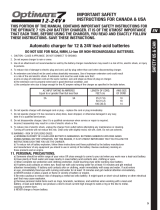 Optimate 7 Select User manual
Optimate 7 Select User manual
-
Adler ADCHARGER 5.3 User manual
-
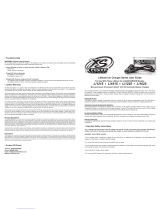 XS Power Li1225 User manual
XS Power Li1225 User manual
-
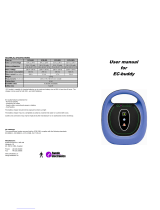 Swede Electronics ECB-1001 User manual
Swede Electronics ECB-1001 User manual
-
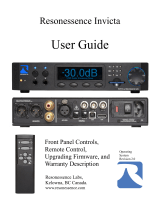 Resonessence INVICTA User manual
Resonessence INVICTA User manual
-
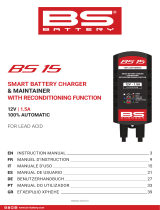 BS BATTERY BS15 Smart Battery Charger Operating instructions
BS BATTERY BS15 Smart Battery Charger Operating instructions
-
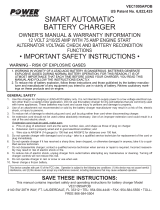 POWER ON BOARD VEC1095APOB Owner's manual
POWER ON BOARD VEC1095APOB Owner's manual
-
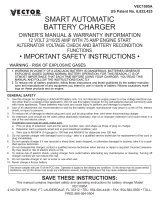 POWER ON BOARD VEC1095A User manual
POWER ON BOARD VEC1095A User manual
-
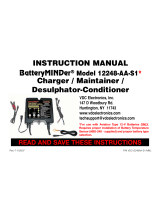 VDC Electronics BatteryMINDer 12248-AA-S1 User manual
VDC Electronics BatteryMINDer 12248-AA-S1 User manual
-
Black & Decker Smart Battery Charger User manual




























